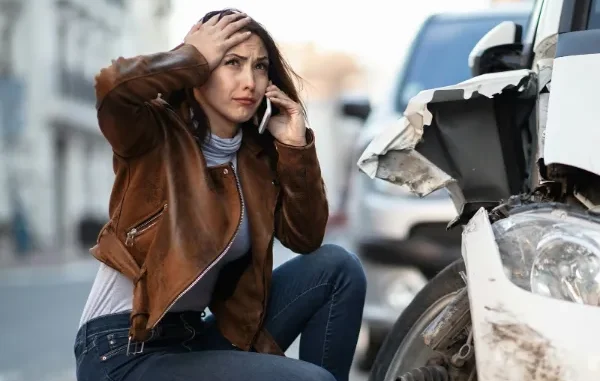

Car accidents can happen anywhere and at any time, often leaving drivers feeling confused and completely overwhelmed. Whether it’s a minor fender-bender or a serious collision, knowing what steps to take immediately afterward can protect your health, your rights, and your finances. For example, rising reports of accidents in Anchorage highlight how quickly a normal day can turn into an emergency situation.
In stressful moments like these, it’s incredibly easy to forget important actions like documenting the scene or contacting your insurance company right away. Your mind races and panic can set in, making it hard to think clearly about what needs to happen next.
This guide walks you through each step to take after a crash so you can stay calm, handle the situation properly, and set yourself up for a smoother recovery process. By preparing ahead of time, you’ll know exactly what to do if it ever happens to you.
Check for Injuries and Ensure Everyone’s Safety
Your first priority should always be checking yourself and any passengers for injuries, no matter how minor the accident seems. Adrenaline can mask pain and serious injuries that might not be immediately obvious. Even if everyone feels fine, it’s important to take a moment to really assess the situation before moving around.
Call 911 immediately if anyone appears hurt, even slightly. Emergency responders are trained to identify injuries that untrained people might miss completely. Don’t try to move seriously injured people unless there’s immediate danger like fire or oncoming traffic that poses a greater risk.
Move vehicles out of active traffic lanes if it’s safe to do so and everyone is able to move around normally. Turn on hazard lights and set up flares or reflective triangles if you have them available. Remember that safety always comes before dealing with insurance companies or documenting property damage.
Call the Police for Official Documentation
Always report the accident to police, even if the crash seems incredibly minor at first glance. What looks like a small fender-bender can involve hidden damage or delayed-onset injuries that become serious later. Police officers create an official record that becomes invaluable when dealing with insurance companies and potential legal issues.
Provide accurate information to the responding officers, but avoid admitting fault or speculating about what caused the accident. Stick to facts about what you observed and experienced without editorializing. Insurance companies and lawyers will determine fault based on evidence, not your immediate impressions at the scene.
Request a copy of the police report once it’s available, which usually takes a few days to complete. Having this official documentation strengthens your position significantly if disputes arise later during the claims process. The report serves as an unbiased third-party account of what happened.
Exchange Information With Everyone Involved
Collect names, addresses, and phone numbers from all drivers involved in the accident, regardless of who might be at fault. You’ll need this contact information for insurance claims and potential follow-up communication. Be polite but thorough when gathering details from other parties involved.
Record license plate numbers and driver’s license details for every vehicle in the crash. Exchange insurance policy numbers and company names with all drivers as well. This information ensures that insurance companies can contact each other directly to handle claims processing and liability determinations.
Get contact information from witnesses if any are present and willing to provide it. Independent witnesses can provide valuable testimony if there are disputes about what actually happened. Their accounts often carry more weight than those of people directly involved in the accident.
Document the Scene Thoroughly
Use your smartphone to take comprehensive photos of vehicle damage from multiple angles, including close-ups and wide shots that show the overall scene. Capture any visible injuries as well, though be respectful when photographing other people involved. These images preserve crucial evidence before vehicles get moved or repaired.
Photograph skid marks, traffic signals, road signs, and weather conditions that might have contributed to the accident. Note the date, time, and exact location of the crash in your phone or write it down immediately. Environmental factors often play a role in determining fault and liability.
Take pictures of the entire accident scene from different vantage points to show vehicle positions and road conditions. Photos and detailed notes preserve important evidence before it gets altered, forgotten, or cleaned up. Strong visual documentation supports both insurance claims and potential legal proceedings down the road.
Notify Your Insurance Company Promptly
Contact your insurance company as soon as possible after the accident, ideally while you’re still at the scene if everyone is safe. Most insurers have 24-hour claim reporting hotlines specifically for situations like this. Prompt reporting often leads to faster claim processing and resolution.
Provide your insurer with the police report number and all the evidence you’ve collected, including photos and contact information from other parties. Answer their questions honestly and completely, but avoid admitting fault or making statements about what you think caused the accident. Let the insurance professionals handle fault determination.
Many insurance policies actually require prompt notification to remain valid, so don’t delay this important step. Quick reporting also helps move your claim forward efficiently and ensures you get the coverage you’re paying for. Your insurance company becomes your advocate in dealing with other parties involved.
Moving Forward After the Chaos
Car accidents are absolutely frightening experiences, but taking the right steps immediately afterward ensures your safety and protects your legal rights. Start by checking for injuries, calling for professional help, and moving everyone to safety away from traffic. These actions prevent additional harm and set the foundation for everything that follows.
Reporting the crash to police, exchanging information with other drivers, and thoroughly documenting the scene all work together to strengthen your insurance claim. Promptly notifying your insurance company helps speed up the settlement process and ensures you get proper representation. Each step builds on the previous ones to protect your interests.
Knowing what to do before an accident happens gives you genuine peace of mind and confidence during an otherwise stressful situation. By staying calm and following this step-by-step approach, you’ll handle the aftermath responsibly and protect yourself both legally and financially when it matters most.






Leave a Reply